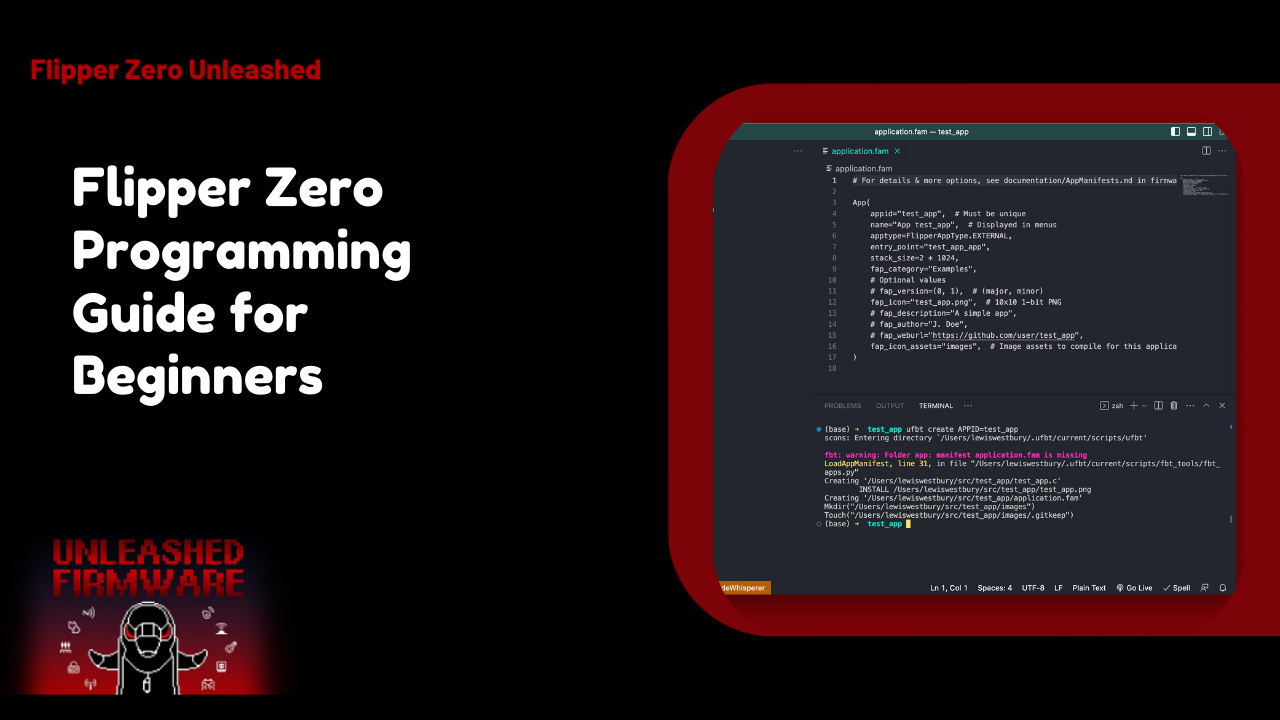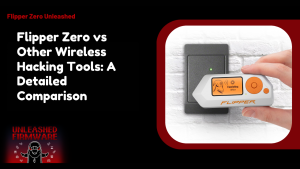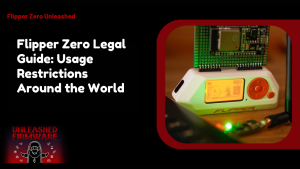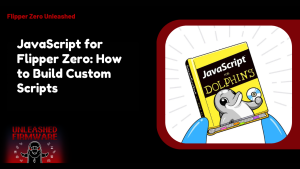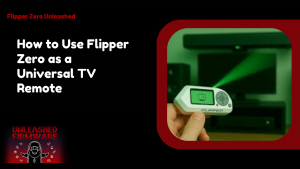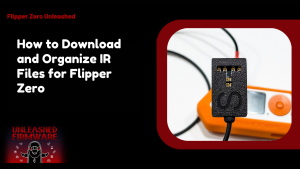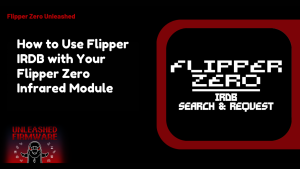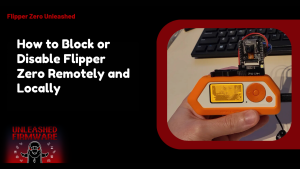Table of Contents
ToggleIntroduction To Flipper Zero Programming
If you’ve ever dreamed of turning your Flipper Zero into a tiny, smart gadget that can automate tasks, interact with devices, and even play with IR signals, learning to program it is the way to go! This little device packs a punch, and with the right skills, you can unlock a world of possibilities. Think of it as giving your Flipper its brain, ready to follow your commands and scripts. Getting started is Flipper Zero Programming Guide for Beginners easier than you might think.
Overview of Flipper Zero Capabilities
The Flipper Zero isn’t just a fun toy; it’s a mini multi-tool for hackers, tinkerers, and tech enthusiasts. From sending IR signals, reading RFID cards, controlling smart devices to executing Flipper scripts, it’s like having a portable lab in your pocket. You can automate repetitive tasks, create custom commands, and even integrate it with other gadgets. It’s also highly versatile. With support for Flipper Zero script downloads, you can explore community-created scripts or write your own to personalize its behavior.
Why Learn Programming on Flipper Zero
Learning to program your Flipper Zero unlocks endless experimentation possibilities. Instead of manually using it for every action, you can automate, schedule, and customize tasks with Flipper scripts. It’s a fun way to learn coding fundamentals while working with real hardware. Plus, once you’re comfortable, you can explore more advanced Flipper Zero scripts, share them with the community, or adapt them to solve practical problems.
What You Need to Know Before Starting the Programming Guide
Before diving in, it helps to understand a few basics. You’ll want to know how Flipper Zero scripts work, the supported languages and how the device interacts with your computer and peripherals. Please think of this as learning the rules before playing the game, it makes everything smoother. Additionally, familiarize yourself with standard scripting practices and safety tips to avoid unintended device behavior.
Supported Languages and Frameworks
When diving into Flipper Zero programming, it’s super helpful to know which languages and frameworks are ready for you to explore. The device primarily supports C and C++ for core development, making it ideal for creating robust Flipper Zero scripts. For enthusiasts who want quicker experiments, Python scripts can also be integrated with some helper libraries. Knowing this upfront saves a significant amount of time and makes your coding journey smoother and more enjoyable.
Required Tools and Software
Before you start coding, you’ll need a few essentials to make your flipper zero scripts download process seamless. First, ensure you have a suitable code editor, such as VS Code or CLion. These editors not only help write clean code but also integrate with version control tools for easy collaboration. You’ll also need Git for managing your repositories, as well as the official Flipper Zero firmware tools to compile and upload scripts.
Understanding Flipper Zero’s Architecture
Understanding how your Flipper Zero works internally is a game-changer. Its architecture includes the main MCU, the radio and IR modules, and storage for scripts and plugins. Knowing these parts helps you write Flipper Zero scripts that interact with the device efficiently and avoid unnecessary errors. With the Flipper Zero’s script download features, the architecture allows you to run multiple scripts, store your code, and even automate tasks.
Setting Up Your Development Environment
To start coding, you need a clean, ready-to-go development environment. This includes installing your editor, configuring the compiler, and setting paths for the SDK. Once set up, you can test your Flipper Zero scripts instantly and debug them efficiently. A proper environment also ensures your flipper scripts download process is fast and error-free.
Installing SDK and Necessary Libraries
The Flipper Zero SDK is your toolbox. Installing it allows you to access all built-in functions, libraries, and templates, enabling you to write your Flipper Zero scripts with confidence. Libraries for hardware interaction like GPIO IR and RFID make development smoother and more exciting. With the SDK in place writing Flipper scripts becomes intuitive. You’ll also be able to run and test your scripts directly making the best flipper zero scripts a reality instead of a concept.
Connecting Flipper Zero to Your Computer
Once your SDK is ready, it’s time to physically connect your Flipper Zero. Use the USB cable and ensure that the drivers are installed so that the device communicates correctly. This connection is essential for uploading your Flipper Zero scripts and checking that everything runs as expected. A smooth connection enables you to manage your Flipper scripts downloads efficiently, test new code safely, and verify that your best Flipper Zero scripts behave as intended.
Testing the Initial Setup
Before jumping into full-fledged projects, test your setup with a simple script. This step confirms that the SDK, libraries, and device connection are all working perfectly. Running a basic Flipper Zero script example ensures you can confidently proceed with more complex creations. Testing early also prevents future frustration. Once your initial scripts run smoothly downloading or creating flipper scripts becomes a joy and you’re on your way to building your best flipper zero scripts in no time
Writing Your First Program
Getting started with Flipper Zero programming is so exciting! Writing your first program gives you that instant I made this! feeling. Start simple by picking a small task such as turning on an LED or reading a sensor. With a tiny success under your belt, you’ll feel confident to tackle more complex flipper zero scripts. Remember, beginners often learn fastest by experimenting.
Basic Structure of Flipper Zero Scripts
All flipper zero scripts follow a predictable structure. You’ll typically start with importing libraries, defining functions, and writing the main loop. This setup makes scripts easy to read, test, and debug. Understanding the structure helps you organize your flipper scripts and download projects efficiently. A clear structure ensures that your code is reliable and your best Flipper Zero scripts run smoothly on the device.
Example: Blinking an LED
A classic beginner’s project is making an LED blink. This introduces you to timing, loops, and basic hardware control in Flipper Zero scripts. You’ll see the immediate effect of your code, which is super rewarding! Even a simple project like this teaches essential skills for writing flipper scripts and testing them. It’s also a fun first step toward creating the best flipper zero scripts that interact with your hardware.
Debugging Simple Programs
Debugging is where learning really clicks. Use the SDK’s console output to identify errors in your Flipper Zero scripts. Print statements, LED signals, or log messages help you figure out what’s working and what isn’t. The more you debug, the better your flipper scripts become. Efficient debugging ensures that your best Flipper Zero scripts are stable and ready for more advanced projects.
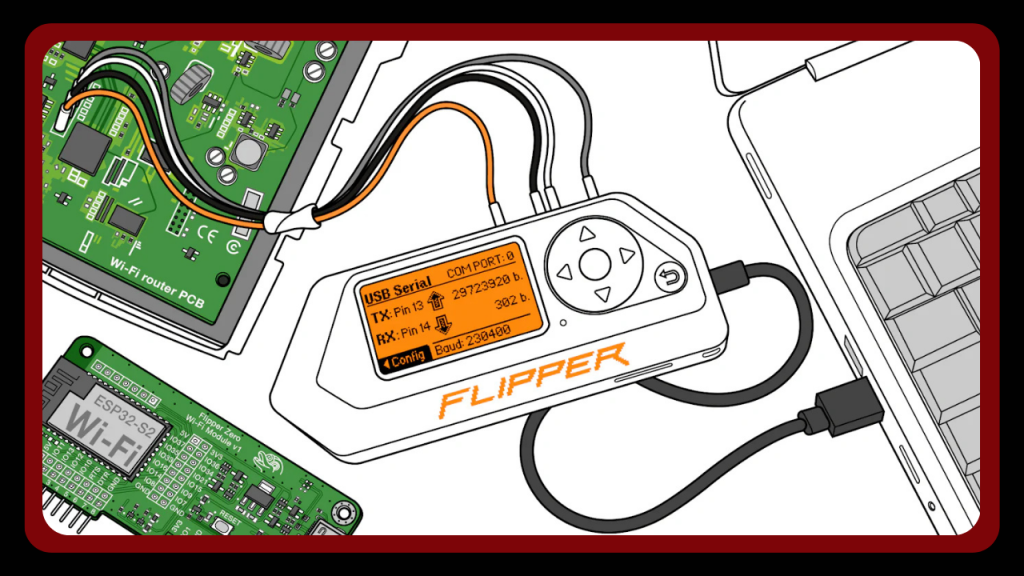
Working with GPIO and Hardware Modules
GPIO pins serve as your gateway to controlling hardware on the Flipper Zero. From LEDs to buttons and sensors, interacting with modules is fun and educational. Writing Flipper Zero scripts for GPIO opens up a world of possibilities for hardware projects. Learning how to manage pins enables your flipper scripts to download tasks seamlessly.
Controlling Pins and Modules
Beyond just reading, you can control outputs like relays, motors, or LEDs. Assign values, toggle states, and test safely. These Flipper Zero scripts enable you to automate small tasks in your projects. With precise control, your flipper scripts become more interactive. Safely manipulating hardware is key to developing the best Flipper Zero scripts that won’t damage your Flipper or connected devices.
Reading Sensor Inputs
Sensors add intelligence to your scripts. Reading values from temperature, motion, or light sensors allows your flipper zero scripts to respond dynamically. It’s the stepping stone to more advanced automation. Once you can read inputs reliably, your flipper scripts download projects become interactive. Proper sensor handling ensures that your best Flipper Zero scripts are both fun and functional.
Best Practices for Safe Hardware Access
Safety first! Always double-check pin voltages, avoid short circuits, and use proper resistors when needed. Writing flipper zero scripts with safety in mind protects both you and your device. Organizing your scripts and testing incrementally ensures that your flipper scripts are safe and effective. Following these best practices helps you build the best flipper zero scripts without unexpected mishaps.
Using Flipper Zero IR and RF Features
Flipper Zero isn’t just a fun gadget; it’s a powerhouse for IR and RF programming! You can control TVs, ACs, garage doors, and more. Learning to use these features lets your flipper zero scripts interact with real-world devices easily. Experimenting with flipper scripts and downloading projects for IR and RF is super satisfying. Once you get the hang of it, your best flipper zero scripts can automate household tasks, making your Flipper feel like magic in your hands.
Programming IR Commands
Writing IR commands with Flipper Zero is more straightforward than it sounds. You can capture signals from remotes or write your own to control devices. Using Flipper Zero scripts to send IR commands provides instant feedback and makes learning fun. With the Flipper Zero IR database, your scripts can quickly reference known codes, making your Flipper scripts’ download routines more reliable. Over time, you’ll build a library of the best flipper zero scripts for everyday devices.
Automating RF Signals
RF programming adds another layer of control. You can automate garage doors, wireless switches, and other RF-enabled devices. Writing flipper zero scripts for RF signals opens up endless possibilities for intelligent automation. By practicing with simple projects, your experience with downloading flipper scripts grows steadily. Safe, consistent RF programming ensures that your best Flipper Zero scripts are both functional and fun to use.
Testing with the Flipper IRDB
Testing is key to confidence! The Flipper Zero IRDB lets you validate your IR and RF scripts before deploying them. You’ll know instantly if a command works or needs tweaking. Using the IRDB flipper effectively ensures that your flipper zero scripts run smoothly. It’s a beginner-friendly way to refine your best flipper zero scripts without guesswork or wasted time.
Tips and Tricks for Beginners
Start small, test often, and always keep your projects organized. Beginners benefit from simple flipper zero scripts that gradually get more complex. Keep notes and screenshots to track what works. Using community tutorials and shared flipper scripts download resources can save a lot of time. Following these strategies ensures that your best Flipper Zero scripts are efficient, safe, and beginner-friendly.
Organizing Your Code Projects
A well-organized team makes programming much more enjoyable. Store your Flipper Zero scripts in separate folders for IR, RF, and general automation. Name files clearly and keep backups for safety. A tidy project setup makes downloading Flipper scripts easier and helps you quickly locate your best Flipper Zero scripts. Organization is a small step that pays off big time as your collection grows.
Using Community Resources
The Flipper community is a goldmine! You can access shared flipper zero scripts, tips, and tutorials from forums, GitHub, and flipper zero scripts download sites. Collaborating with others accelerates your learning. Referencing the Flipper Zero IR database or IRDB Flipper contributions helps beginners write reliable scripts. Leveraging community resources ensures that your best Flipper Zero scripts are informed, tested and ready to use.
Avoiding Common Mistakes
Common pitfalls include sending signals too fast, mixing IR and RF commands, or skipping testing. Take your time when writing Flipper Zero scripts to avoid these errors. Debugging early and using the Flipper Zero scripts download workflow prevents headaches later. Following these practices ensures that your best Flipper Zero scripts are smooth, safe and beginner-friendly.
Conclusion
Getting started with Flipper Zero programming is easier than it seems! By learning to write Flipper Zero scripts, testing them with the Flipper Zero IR database, and exploring community resources, beginners can quickly turn their device into a powerful tool for IR and RF automation. Staying organized, practicing safe hardware access, and experimenting with simple projects will help you build confidence. With flipper scripts download options and the IRDB flipper at your fingertips, you’ll soon have a collection of the best flipper zero scripts that make your Flipper Zero both fun and functional.
FAQs
How do I start programming on Flipper Zero?
To begin, set up your development environment by installing the SDK and necessary libraries. Start with simple flipper zero scripts, such as blinking an LED or reading a sensor, and gradually move on to more complex projects. Using tutorials and community examples makes learning easier.
Which programming languages are supported?
Flipper Zero primarily supports C/C++ for hardware-level scripts and Python for higher-level automation tasks. These languages let you create both simple and advanced flipper scripts efficiently.
Can I run multiple scripts at once?
Flipper Zero can run one main script at a time, but you can schedule tasks and create scripts that trigger other scripts or IR/RF commands. Proper organization helps manage multiple actions safely.
How do I debug errors on Flipper Zero?
Use the built-in logging tools and console outputs to verify your Flipper Zero scripts. Step-by-step testing and breaking code into smaller sections help identify and fix errors quickly.
Are there libraries for IR and RF programming?
Yes! You can utilize the Flipper Zero IR database and community libraries for IR and RF automation. These make it easier to program signals without manually capturing each one.
Can beginners contribute to Flipper Zero projects?
Absolutely! Beginners can start by writing simple flipper scripts or improving documentation. Using community resources and sharing tested scripts via platforms like IRDB Flipper encourages collaboration and learning.
How do I find the best Flipper Zero scripts?
The best flipper zero scripts are often shared on GitHub or the Flipper community forums. Look for well-documented scripts that are regularly updated for compatibility.
Can I automate IR and RF tasks with my scripts?
Yes! With Flipper Zero scripts, download and custom coding, you can automate repetitive tasks such as turning devices on/off, sending sequences of IR commands, or even creating complex routines across multiple devices.
Latest post:
